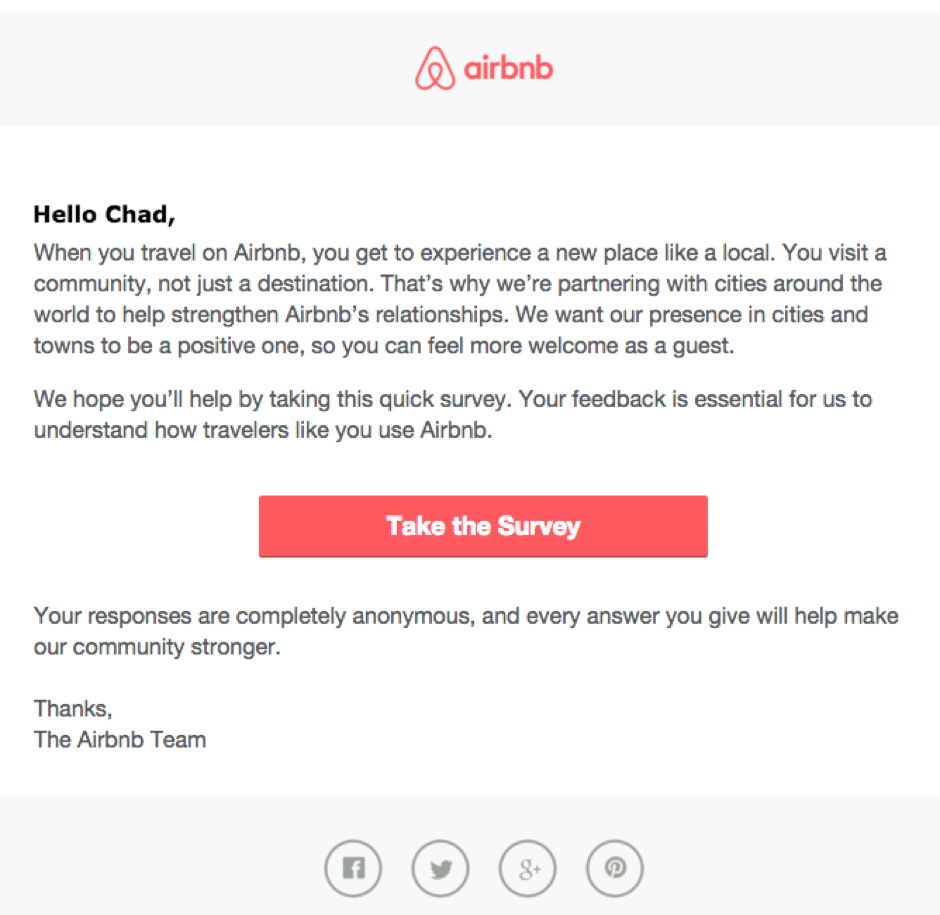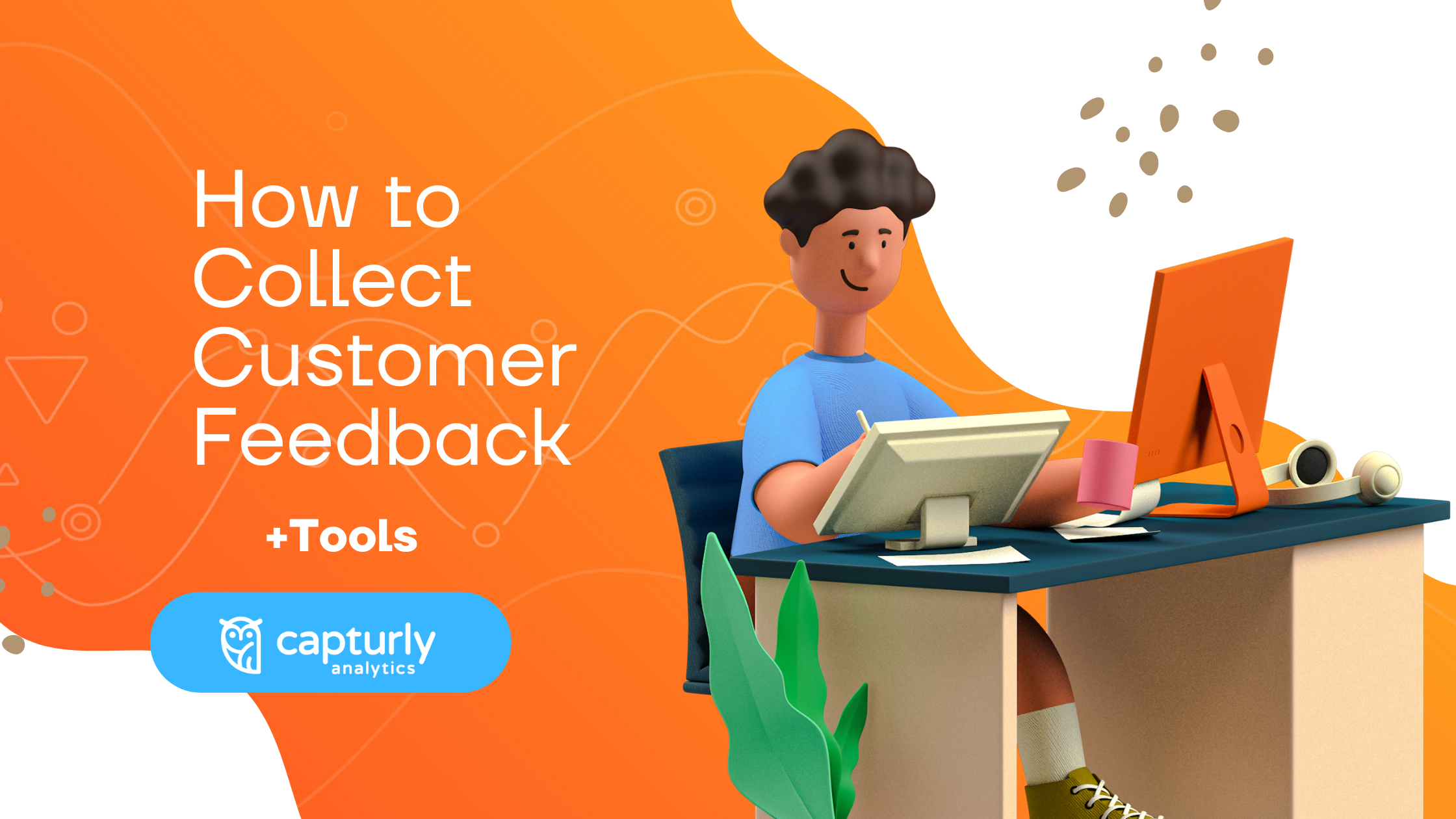Your customers are the lifeblood of your business. It means that what they think of your business must be one of the most important things you collect and listen to.
You might think that you’ve invested in so many things just to make your customers satisfied and happy. But, how do you know that they actually are?
The answer is customer feedback.
It’s important to always be collecting feedback from your customers– whether you’re a freshly-launched eCommerce store or even a blockchain game company. You can never assume that they’re happy or satisfied with your products or services just because they haven’t complained yet.
In order to get accurate and honest feedback, you need to make it easy for your customers to give it to you.
There are a few different ways that you can go about collecting customer feedback and let’s dive into a few of them– along with the tools you need to do so.
Table of Contents
Customer Feedback: How Bad Do You Actually Need It?
Before we get into the nitty-gritty details, it’s crucial to understand why you need customer feedback in the first place.
As a business owner, it’s easy to get tunnel vision and forget that there are people on the other side of our products or services. We get so focused on making sales that we often overlook whether our customers are actually happy with what they’re getting.
This is a recipe for disaster because sooner or later, your customers will get fed up and take their business elsewhere.
It’s essential to have a finger on the pulse of your customer base at all times so that you can address any issues before they become bigger problems.
This is where customer feedback comes in. It allows you to hear directly from the people who use your products or services and get their honest opinion.
It can be difficult to hear negative feedback, but it’s important to remember that it’s a valuable opportunity to improve your business. After all, you can’t fix what you don’t know is broken.
What Do You Need to Prepare Before Starting Collecting Customer Feedback?
Now that we’ve established how important customer feedback is, let’s talk about what you need to do before you start collecting it.
Choose the right feedback collecting method
The first step is to decide which method or methods you’re going to use to collect feedback.
Will you send out surveys?
Host focus groups?
Invest in social listening?
The options are endless, but it’s important to choose the method or methods that will work best for your business.
What’s next?
Once you’ve decided how you’re going to collect feedback, you need to create a plan for what you’re going to do with it.
This means setting goals and objectives for your feedback campaign and figuring out how you’re going to measure success.
Pick the right tools
Last but not least, you need to choose the right tools for the job. This will vary depending on the method or methods you’ve chosen, but there are a few essential tools that every business should have in their feedback arsenal.
How to Collect Customer Feedback?
There are a few different ways that you can collect customer feedback. Which method you choose will depend on your business, your budget, and your goals.
Here are a few of the most popular methods:
Customer surveys
One of the most common ways is through customer surveys. You can send these out either electronically or through the mail.
Email surveys are a great way to get detailed feedback from your customers. They allow you to ask specific questions and get in-depth answers.
However, one downside of customer surveys is that they can be time-consuming to create and send out. Additionally, you might not get a high response rate, which can make it difficult to get accurate feedback.
That all said, this method is perfect if you want to get feedback from a specific group of customers, such as those who recently made a purchase.
Below is the example of a customer survey with an open-ended question by Qualtrics.

Source: Qualtrics
Customer interviews
Another way to collect customer feedback is through customer interviews. This can be either formal or informal, depending on your preference.
This involves sitting down with a customer (either in person or over the phone) and asking them questions about their experience with your business.
It might sound daunting for some, but customer interviews are actually a great way to get feedback because they’re more personal. This method allows you to build a relationship with your customers and get detailed feedback.

Source: Unsplash
You can also film their answer to create a testimonial video that you can use on your website or social media. And use their review on your presentation videos so people can learn about how others have used your product and benefited from it.
The downside of customer interviews is that they can be time-consuming, especially if you have a lot of customers. Additionally, it might be difficult to find willing participants.
Social listening
Another great way to collect customer feedback is through social media. This is a quick and easy way to get feedback from your customers because all you have to do is ask and/or answer.
You can post a question on your social media platforms, such as Facebook or Twitter, and encourage your followers to answer. You can also use social listening to monitor what people are saying about your brand.
This is a great way to get real-time feedback from your customers. However, it’s important to remember that not everyone uses social media, so you might not reach your entire customer base this way.
But, if you want to get feedback quickly, social media is a great option.
Here’s how Southwest Airlines nailed the social media listening:

Source: Zapier
Net promoter score (NPS) surveys
Another popular method of collecting customer feedback is through NPS surveys. These are quick and easy surveys that you can send out to your customers.
NPS surveys ask customers how likely they are to recommend your business to a friend or family member. They use a scale of 0-100, with anything above 50 being considered positive feedback.
Here’s an example:

Source: SurveyMonkey
This is a great way to get feedback because it’s quick and easy for both you and your customers. Additionally, it’s a great way to measure customer satisfaction over time.
The downside of NPS surveys is that they only give you a limited amount of information. They’re also not as detailed as other methods, such as customer surveys.
Focus groups
Focus groups are another great way to collect customer feedback. This involves bringing together a group of customers and asking them questions about their experience with your business.
This is a great way to get detailed feedback from your customers because you can ask follow-up questions and get in-depth answers. Focus groups also allow you to get feedback from a group of customers, which can be helpful if you’re trying to target a specific market.

Source: Unsplash
The downside of focus groups is that they can be time-consuming and expensive to set up. Not to mention that you also have to find a group of willing participants.
User testing
When you have a new product or website to launch, it’s important to get feedback from your users. This is where user testing comes in.
User testing involves giving your customers a task to complete and then asking them questions about their experience. This is a great way to collect feedback because you can see how people are actually using your product or website.
For instance, if you’re launching a new website, you can ask people to navigate to a specific page and then ask them questions about their experience. This will help you identify any problems with your website and make necessary changes before launch.
It’s also a great way to identify any problems that your customers are having. The downside of user testing is that it can be time-consuming, especially if you have a lot of users.
It’s also important to note that user testing should be done before you launch your product or website. This way, you can make sure that everything is working correctly before it goes live.
Transactional emails
Transactional emails can also be a great way to collect customer feedback. This is because they’re already being sent to your customers on a regular basis.
For instance, if you have an e-commerce store, you can include a link to a survey in your order confirmation email. This way, your customers can easily give you feedback about their experience.
The downside of transactional emails is that they can be easily ignored by your customers. Additionally, if you’re not careful, they can come across as being too sales-y and even end up in the spam folder.
But, if you’re looking for a way to collect feedback that’s quick and easy, transactional emails are a great option.
Here’s an example from Airbnb:

Source: Xola
How to Choose the Right Method?
Now that we understand some of the powerful ways to get insightful customer feedback, there’s one question that might still be lingering:
“What’s the best method to collect feedback?”
The answer to this question depends on your specific needs. For instance, if you’re looking for detailed feedback, focus groups might be a better option than NPS surveys.
Additionally, if you need to collect feedback quickly, transactional emails might be a better option than user testing.
The bottom line is that there’s no one-size-fits-all answer to this question. It all depends on your specific needs and goals.
Customer Feedback Tools You Need
Once you’ve decided on the best method to collect customer feedback, it’s time to start thinking about the tools you need. Here are some of the essential customer feedback tools:
Survey software
Survey software is a must-have if you’re planning on collecting customer feedback. This type of software allows you to create and send surveys to your customers.
It also allows you to track your responses and see how your customers are responding to your surveys. There are many different survey software options available. Some of the most popular ones include SurveyMonkey and Typeform.
Social listening tool
If you’re collecting customer feedback on social media, you need a social listening tool to track and analyze your customers’ social media activity.
This is a valuable way to collect feedback because it allows you to see what people are saying about your brand online. Additionally, it can help you identify any negative sentiment and take action to improve your customer experience.
Some of the most popular social listening tools are Hootsuite Insights, Sprout Social, and NetBase.
NPS software
If you’re planning on using the NPS method to collect customer feedback, you’ll need NPS software. This type of software allows you to send out surveys and track your results.
It also allows you to segment your customers based on their responses. This is a great way to identify promoters, passives, and detractors.
Here is some NPS software that many marketers use in the market:
- Delighted
- Wootric
- io
- Qualtrics
User testing software
If you’re planning on doing user testing, you’ll need user testing software. This type of software allows you to record your users as they use your product or website.
It also allows you to see how they interact with your product or website. This is a great way to identify any problems with your product or website.

Source: Unsplash
There are many different user testing software options available, such as UserTesting.com and Inspectlet.
Transactional email tool
If you’re planning on using transactional emails to collect customer feedback, you’ll need a transactional email tool. This type of software allows you to send out surveys to your customers.
It also allows you to track your results and see how your customers are responding to your surveys.
There are many different transactional email tools available in the market, including Mailchimp and SendGrid.
How to Come Up With Good Questions?
Good answers most of the time start with good questions. When it comes to customer feedback, you need to make sure that you’re asking the right questions.
Now that you know the essential and popular tools you can use to create surveys, NPS, etc., you might wonder how you can write down thought-provoking questions for customer interviews and focus groups methods.
Here are some tips on how to come up with a good question:
Be specific
The more specific your question is, the more insightful your answer will be. It means that you should avoid asking general questions like “What do you think of our product?”
Instead, you should ask specific questions such as
“What do you think of the new feature we just launched?”
“How easy is it to use our product?”
Be clear
Your question should be clear and concise. It shouldn’t be too long or too complicated.
Your goal is to make it easy for your customers to understand and answer your question.
Ask open-ended questions
Open-ended questions are great because they allow your customers to elaborate on their answers. This is valuable because you can learn more about their thoughts and feelings.
Some examples of open-ended questions include
“Why do you feel that way?”
“Can you tell me more about that?”
Avoid yes or no questions
Yes or no questions don’t allow your customers to elaborate on their answers. This means that you won’t be able to learn as much from their responses- they will not give you the detailed information that you’re looking for.
Rather than asking questions like
“Do you like our product?”
“Is our product easy to use?”
“What do you like about our product?”
“What can we do to make our product easier to use for you?”
Avoid leading questions
Leading questions can bias your results. For example, a leading question like “Don’t you think our product is the best?” is more likely to result in a positive answer than an unbiased question like “What do you think of our product?”
A biased answer can distort your results and make it difficult to get an accurate picture of your customers’ true thoughts and feelings.
Keep it short and simple
Keep your questions short and to the point. This will make it easier for your customers to answer them.
It’s also important to avoid asking too many questions at once. If you do, your customers will get overwhelmed and may not be able to provide thoughtful answers.
Instead, try asking a few questions at a time and then following up with additional questions if necessary.
Wrapping Up
Customer feedback is important because it allows you to improve your business. It also helps you to understand what your customers want and need. Remember that it’s not a one-time thing- you should constantly be collecting feedback from your customers to make necessary changes to improve your business.
Also, note that collecting feedback is one thing. Acting upon them is another. You should always take action based on the feedback you’ve collected. Otherwise, there’s no point in collecting it in the first place.
Author
Andre Oentoro is the founder of Breadnbeyond, an award-winning explainer video production company. He helps businesses increase conversion rates, close more sales, and get positive ROI from explainer videos (in that order).
Don't forget, sharing is caring! :)


1 Comment
fortnite accounts for sale
2023-06-19 at 03:18I appreciate you and hopping for some more informative posts